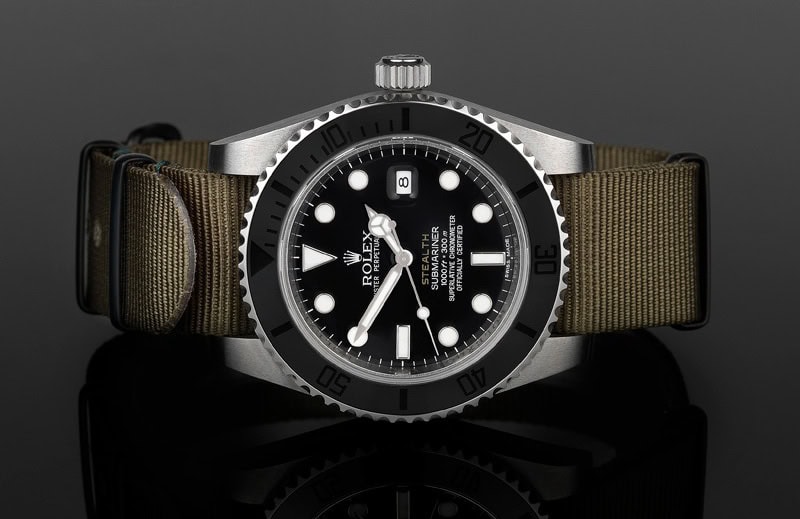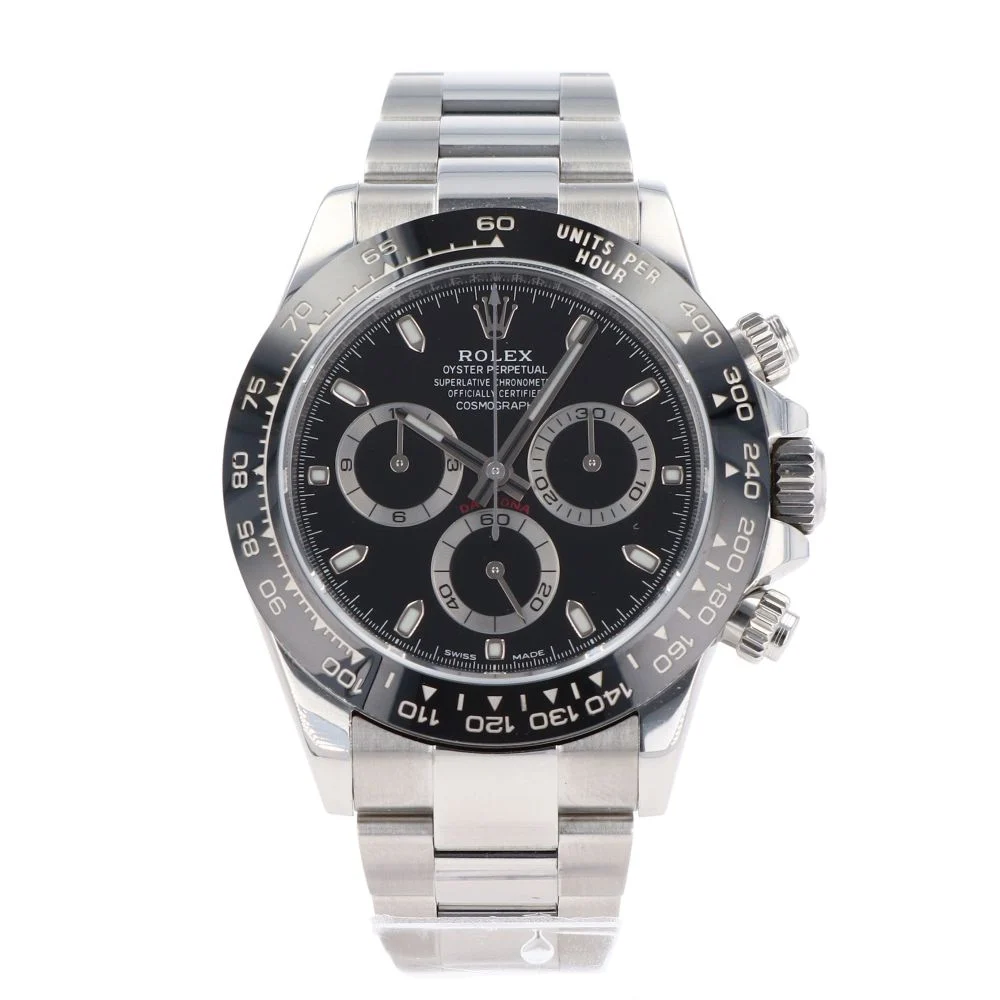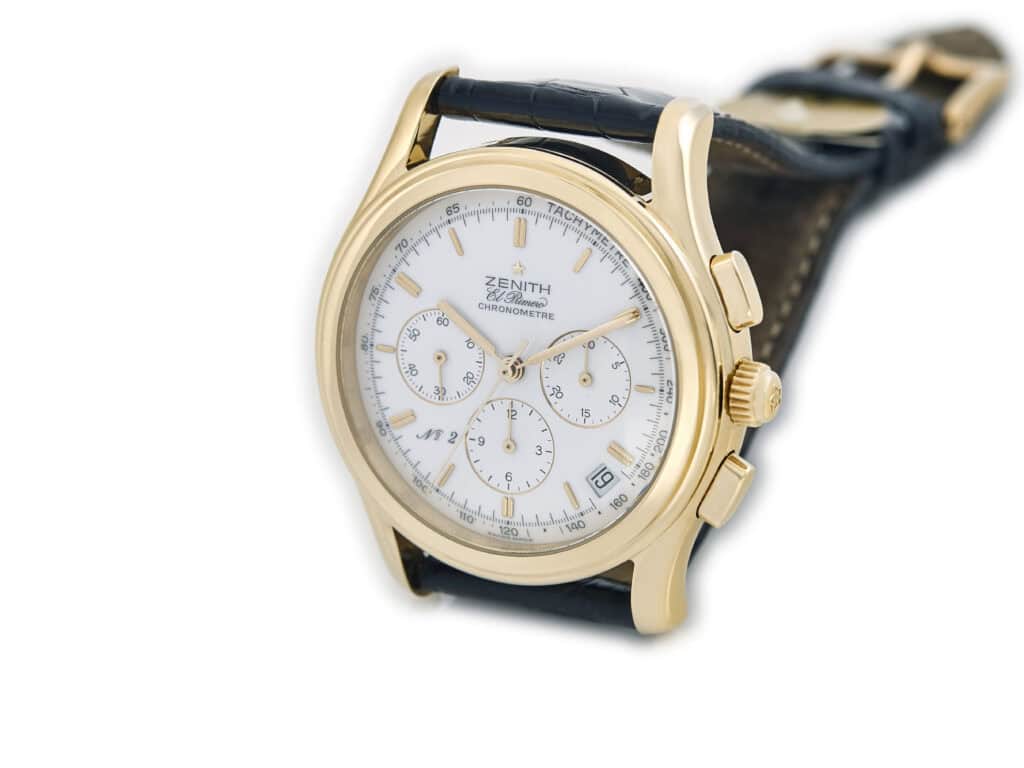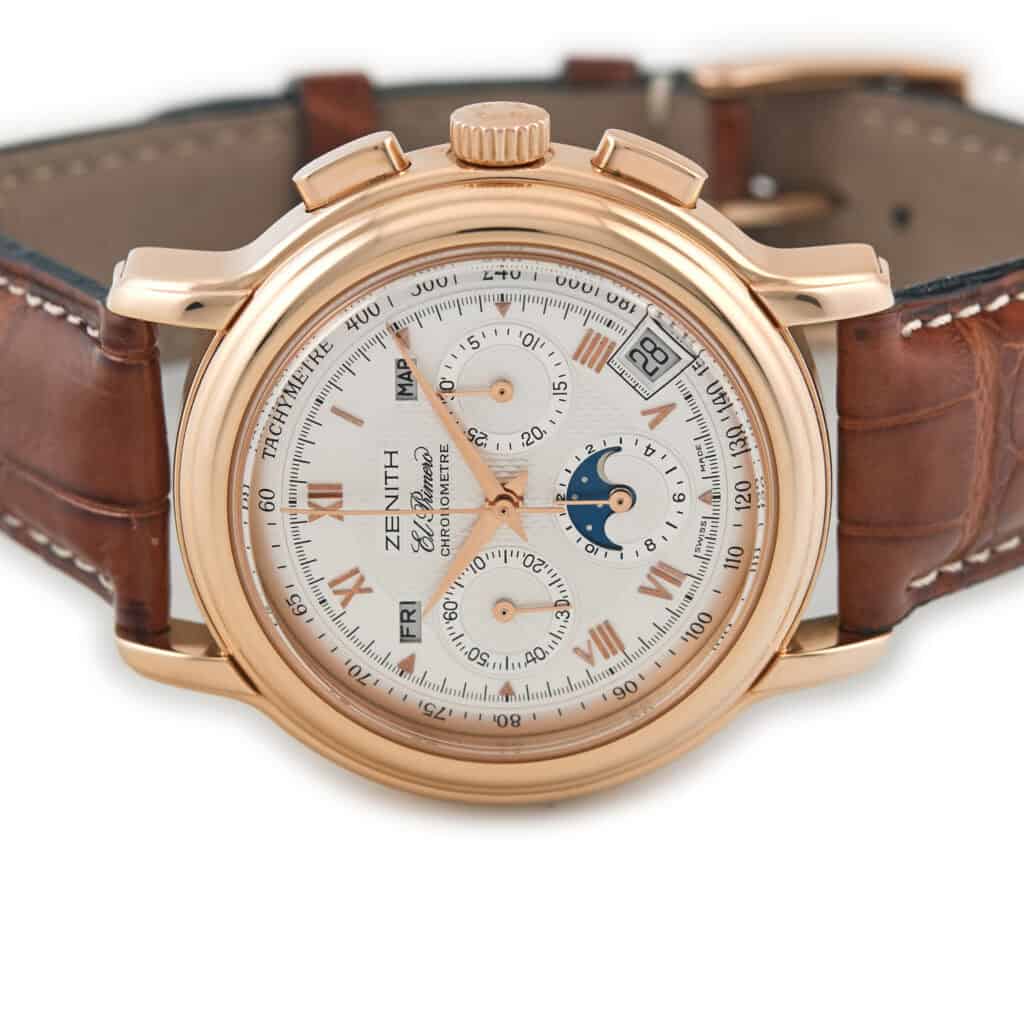By Alan Wood
Discover the five most iconic vintage watches of all time and why they’ve achieved such success, as chosen by the vintage watch experts at Vintage Gold Watches.

Alan Wood is a trusted vintage watch dealer with over 35 years of private collecting experience. After founding Vintage Gold Watches in 2011, his deep knowledge and infectious passion for mechanical timepieces earned him a highly respected reputation in the industry. Vintage Gold Watches has become a renowned dealer thanks to Alan’s expertise and skilled team of restorers. Alan’s love for vintage watches started as a young Mechanical Entrepreneur and grew into an obsession. He believes the finest watches were made in the 1950s, 60s, and 70s, and is thrilled to share them with others.
When it comes to vintage timepieces, there are distinguished models from reputable brands and then there are the classics of watchmaking excellence—the vintage watch icons. These are the revered models that have weathered the storms of time to become the epitome of desirability and prestige.
Join us as we unveil the enduring allure and exceptional craftsmanship behind five of, what we believe, are the most iconic vintage watches. Each deserves a revered place on any watch enthusiast’s wrist.
Omega Speedmaster

Few watches are as iconic as the Omega Speedmaster.
Introduced in 1957 under reference CK2915, Omega did not initially design it to be worn on the moon. Instead, it served as a sports chronograph tailored for motorsports and various athletic occasions, seamlessly fitting into the brand’s other sporty models the Seamaster and Railmaster.
The chronograph’s versatility extended beyond sports, catering to professionals like doctors who required precise event timing, solidifying its status as one of the most iconic tool watches in horological history.
When the Speedmaster first launched, it stood out amongst its petite peers. Its easy-to-read design, inspired by the dashboards of the Italian sports cars of the time, was an instant hit.
It was innovative, too. It was the first watch to feature a tachometer separate from the dial. Placing it on the bezel freed up space, giving a cleaner, more streamlined appearance that became a big hit. To this day, the design and look of the watch have barely changed since it was first introduced to the market.
Solidifying the Speedmaster’s legacy was its pivotal role in the space race. The first Omega watch to venture beyond Earth’s atmosphere accompanied astronaut Walter Schirra, who became the fifth American to journey into space in 1962. NASA commenced rigorous watch testing in 1965, subjecting timepieces from four different luxury brands to 11 extreme tests. Among them was the Omega Speedmaster—the sole watch to emerge unscathed from the rigorous trials. You can see an excerpt from the NASA report here.
However, it was the historic Apollo moon landing in 1969 that etched the Omega Speedmaster into the collective memory of millions. During this monumental event, astronaut Edwin “Buzz” Aldrin notably wore the Speedmaster on his wrist, secured with a Velcro band. Sadly, the iconic watch was lost in transit to the Smithsonian Institution and has never been recovered.
Since that pivotal moment, the Speedmaster has affectionately earned the moniker “The Moonwatch” and has remained deeply ingrained in our hearts ever since.

Throughout Patek Philippe’s illustrious history, numerous watches have achieved iconic status, but none command as much admiration as the Calatrava. Renowned for its slender case, minimalist dial, and meticulous detailing, this timepiece epitomises Patek Philippe’s design ethos.
The Calatrava was a trailblazer, being one of the first watches to be known by its name rather than its reference number, as was customary until then. Its name derives from the Calatrava cross, a symbol originally adorning the banners of the Calatrava knights from Spain and Portugal, who defended the Calatrava fortress against the Moors in 1158.
The essence of understated sophistication, the Patek Philippe Calatrava Reference 96 is thought of by many to be thedesign for the ultimate dress watch. Inspired by the Bauhaus minimalist design principles, the watch was launched in 1932 in the midst of the great depression. This influence can be seen clearly in the simple, elegant and non-superfluous design that has become the essence of Patek Philippe.
The Patek Philippe Calatrava Ref. 96 was in production for over 40 years (1932 – 1973), a testament to its incredible success and popularity. Throughout that period, multiple variations were developed. It is partly this that makes collecting Calatrava Ref 96’s so addictive. You never know what you might find, and there is so much variety, and several variations often appear in the same model.

The Rolex Submariner holds the distinction of being the first wristwatch designed specifically for scuba diving, owing to its innovative water and pressure-resistant casing derived from the Oyster Perpetual casing of the mid-1930s. This legendary tool watch rightfully earns its place on the list of the most iconic timepieces for numerous compelling reasons. The profound impact of the Rolex Submariner on the world of watchmaking cannot be overstated.
Originally released in 1954, the Rolex Submariner is arguably the most copied watch design of all time. The unique elegance of the Submariner’s design meant that it quickly gained mainstream appeal as a watch for all occasions, not just as a divers tool watch.
The initial Submariner references from the 1950s lacked crown guards around the winding crown and were equipped with 37mm steel cases and radium-based luminescence. Rolex produced a diverse range of references during this era, featuring different water depth ratings (100m to 200m), crown sizes, and dial styles (pencil hands, Mercedes hands, and Explorer-style dials). These distinct models are highly rare and greatly coveted by collectors.
Throughout the 1960s and 1970s, Rolex continued to evolve the Submariner with various iterations. In the late 1960s, the introduction of the Submariner Date marked a significant milestone, featuring a calendar function accompanied by a distinctive ‘cyclops’ magnification lens. This revised model aimed to transform the Submariner into more than just a purpose-built diving watch, positioning it as a coveted status symbol for a broader audience.
The inclusion of a date window and the production of the first gold Submariner catered not to divers but to the burgeoning mass market, which was captivated by the allure of the Submariner. This enduring fascination persists to this day, cementing the Submariner’s iconic status in the realm of luxury timepieces.
Rolex Daytona

The Rolex Daytona has evolved to epitomise the essence of the Rolex brand. Since its initial launch over 60 years ago, it has retained its allure and iconic status, remaining as desirable and recognisable as ever.
Originally named the Cosmograph, the Rolex Daytona made its debut in 1963 as the Ref. 6239. This stainless-steel model boasted a matching bezel with an engraved tachometer scale. Standout features included chronograph sub-dials in a contrasting colour to the main dial, presenting either black counters on a light-coloured dial or light-coloured counters on a black dial.
The Cosmograph was designed from the start to fulfil the needs of professional racing drivers, offering a tachometer and the precision to time events to 1/5 of a second. Initially, the watch did not gain immediate commercial success. One reason for this was the initial size of 36.5 mm, which was considered quite large at the time and not in keeping with the fashion for slimline wristwatches.
By 1965, it had evolved to also offer a bezel with an acrylic insert and screw-down pushers. Around the same time, the name Daytona started to appear on the dials. First only in the U.S. market to solidify Rolex’s partnership with Daytona Speedway racing in the minds of the US market, but soon across other markets too. The name Daytona was taken from the famous Florida city, Daytona, which was home to speedway car racing and hosted multiple land speed record attempts.
Part of the Daytona’s allure stems from its charismatic patrons, who unwittingly became brand ambassadors. A prime example is Paul Newman, the world-renowned actor and racecar driver of his time, who sported his Rolex Daytona in all his races. The Ref. 6239 model introduced the distinctive “exotic dials” with easily recognisable contrasting scales for chronograph seconds.
Initially perceived as undesirable, the Ref. 6239 exotic dial later garnered fame among collectors as the “Paul Newman” dial. Its association with the legendary Paul Newman significantly increased its desirability and value, surpassing that of comparable standard dials.

Since its debut, the El Primero has captivated watch enthusiasts worldwide with its exceptional performance, earning admiration as possessing the world’s most accurate movements. From its groundbreaking technical innovations upon unveiling to its pivotal role in the post-Quartz Crisis resurgence of mechanical watches, the El Primero has consistently been at the forefront of horological excellence, living up to its name by achieving numerous milestones and firsts.
In 1969, Zenith introduced the El Primero as a contender in the race to develop the world’s first automatic chronograph movement. Amidst stiff competition from industry giants such as Büren, Hamilton, Breitling, Heuer, and Seiko, Zenith sought to achieve the remarkable technical feat of crafting a precise automatic chronograph that could fit into a slim casing.
The El Primero, meaning first in Spanish, was unveiled in January 1969, 4 months ahead of the Büren/Hamilton/Breitling/Heuer collaboration, which launched their Calibre 11 Chronomatic in May of 1969. However, the winner of this innovation race is still challenged to this day as competitors began selling their new automatic chronographs to the public 3 months before Zenith. Despite competitors being hot on the heels of Zenith’s pioneering watch, no one could steal the limelight from the El Primero.
The El Primero was astonishing, achieving many design and engineering firsts. It amazed the watch industry and the public alike. It measured 29 mm in diameter and was a mere 6.5 mm tall – even slimmer than traditional chronographs. A dry lubricant based on molybdenum sulfate was used for the first time, contributing to the calibre’s highly precise rate.
In the late 60s, most calibres were paced at 21,600 vph or less, while the Breitling team’s Calibre 11 Chronomatic oscillated at a frequency of 19,800 vph. It was such a leap in technology that this very movement would be found inside legends like the Rolex Daytona for the next 30 years.
The El Primero is the foundation on which Zenith has built its reputation. The solidity and precision of the 1969 original have been enriched with numerous complications over the years, including a tourbillon, large date, split-seconds mechanism, minute repeater, alarm, retrograde date and jumping seconds. For watch collectors and admirers, El Primero will always be The First.
Not all good things come to an end
We hope you’ve enjoyed this jaunt through watchmaking history stopping off to admire the five most iconic watches ever made, according to us at Vintage Gold Watches.
If you’d like to stay up to date on vintage watch news and be the first to see the latest watches added to our collection, sign up for our weekly newsletter.


